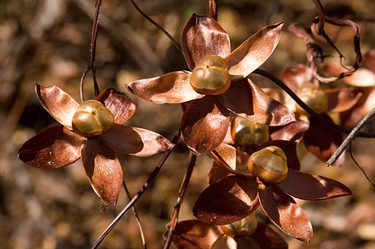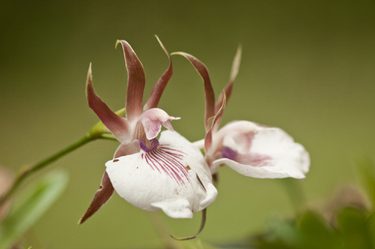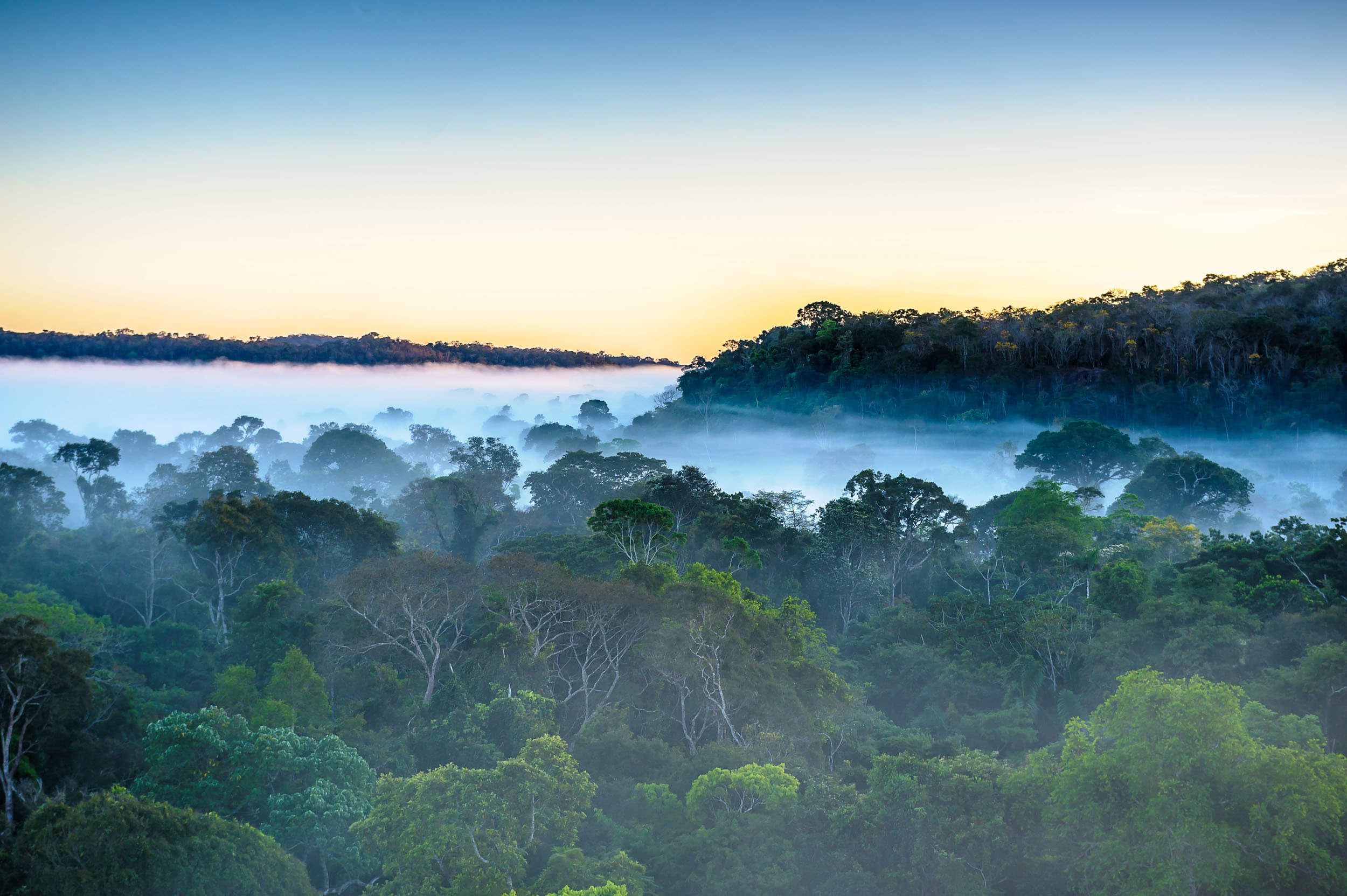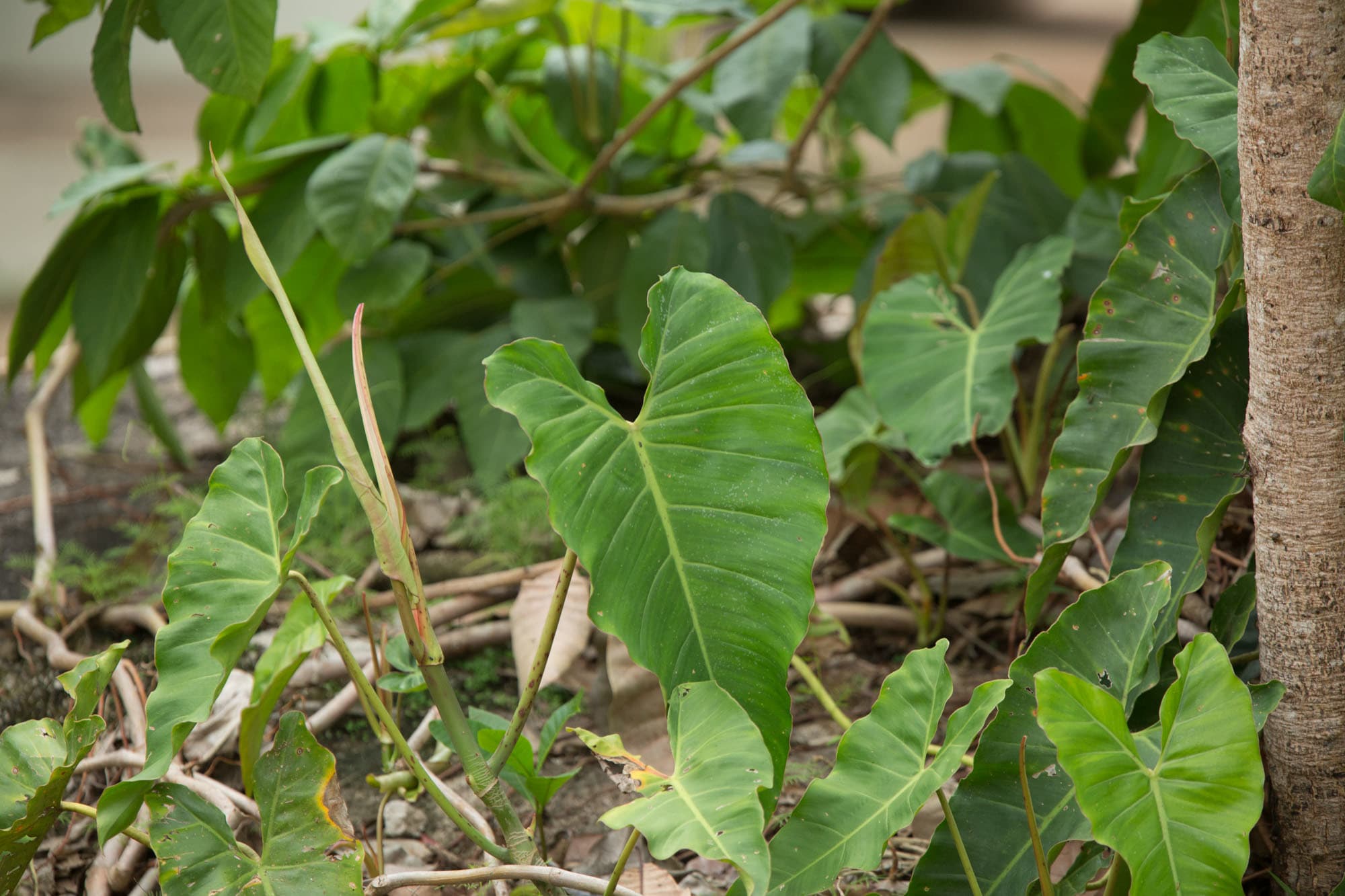









Also known as Tropical Submontane Deciduous Forest, is found in areas of up to 450 meters above sea level. It is a very dry vegetation and resembles the Savannah landscape, but with its own very different floral profile. The soil is dry also, shallow and rocky, and in areas where the canopy is higher the trees are about 20-30 meters in height. Rocky slabs are very common on the hillsides, forming clearings where bromeliads, orchids and other wild flowers grow. Examples of the orchids are (Aspasia variegata), (Encyclia tarumana), (Scaphyglottis cf. amazônica), (Trizeuxis falcata) and (Zygosepalum lindeniae).

The vegetation of the Cristalino uplands or sierras (top right) completely sheds its leaves during certain times of the year.
The tree species include the Brazilian Plum or Umbu (Spondias sp.), Perobas (Aspidosperma sp.), Ipes (Tabebuia barbata, T. capitata, and T. spp.), shellseed (Cochlospermum orinocense), Spanish Cedar (Cedrela odorata), Prickly Ash (Zanthoxylum rhoifolium), Quinine Bark (Coutarea hexandra), Parica (Anadenanthera peregrina), Jatoba (Hymenaea courbaril), and representatives of the Mallow (Bombacopsis spp., and Pseudobombax cf. longiflorum), Pea (Chloroleucon acaciodes and Platymiscium duckei), Myrtle (Eugenia sp. and Callisthene fasciculata) and Rubiaceae (Dialypetalanthus fuscescens) families. The higher ground provides an attractive view of the valleys.
This type of vegetation is similar to the deciduous forest vegetation, but is found at lower elevations in rocky locations where the soil is hard and contains few nutrients. The plants are able to establish themselves and grow in the cracks in the rocks, with the rocks often hiding part of the stem. There is limited water available and it is only retained in the deeper cracks. The ground supports herbaceous plants, philodendrons, bromeliads and orchids, with scattered trees and shrubs. This vegetation can be found close to the Cristalino Lodge, in a place that has its own special atmosphere, known as the “Secret Garden”.

Philodendrons in the Secret Garden, growing amongst the pink granite rocks.
